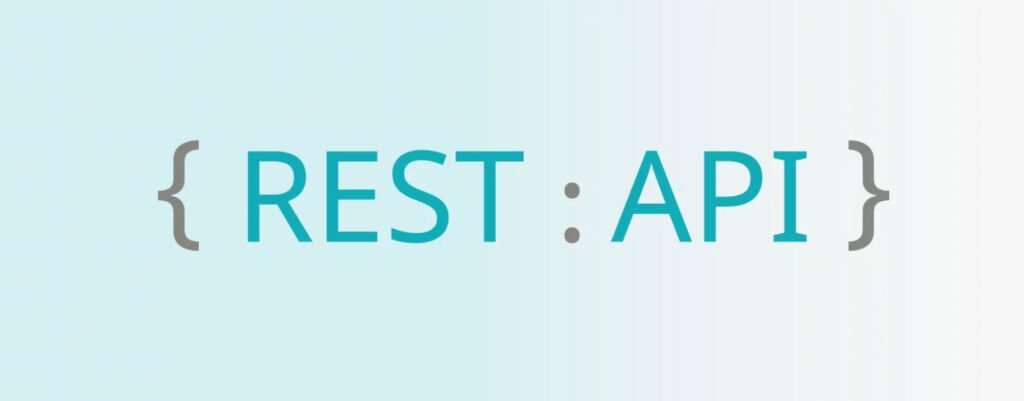Don’t overwhelm yourself to learn REST API; it’s simpler than you might think. REST, which stands for Representational State Transfer, is an architectural style for designing networked applications. In this article, we will break down the key components and concepts of REST API into bite-sized pieces to make it more approachable.
1. Introduction to REST APIs
At its core, REST is a set of principles that dictate how web services should be structured. It relies on stateless communication, meaning each request from a client to a server must contain all the information needed to understand and process the request. This enables scalability and reliability.
API Endpoints
API endpoints are specific URLs where you can access the functionality of a service. They are like addresses for the actions you want to perform. For example, to retrieve data, you might use the `/users` endpoint, while to update data, you’d use the `/users/{id}` endpoint.
2. HTTP Methods
REST APIs utilize the HTTP protocol for communication. Here are the fundamental HTTP methods:
- GET – Used for retrieving data from the server. No changes are made on the server.
- POST – Used for creating new data on the server.
- PUT – Used for updating existing data on the server.
- DELETE – Used for removing data from the server.
3. URLs and URIs
Constructing Meaningful URLs
Well-structured URLs make your API intuitive and user-friendly. A URL should represent the resource being accessed, making it easy to understand and use.
Query Parameters
Query parameters are used to filter, sort, or limit the data returned by an API endpoint. For example, you might use `?page=2&per_page=10` to request the second page of results with ten items per page.
4. Request and Response
Structure of HTTP Requests
HTTP requests consist of a method, headers, and an optional body, which contains data. Understanding request structure is crucial for effective API usage.
Responses
Responses include status codes, headers, and a response body. These elements provide information about the success or failure of a request and the data returned.
5. JSON
Data Serialization with JSON
JSON (JavaScript Object Notation) is the most common format for data exchange in REST APIs. It’s lightweight, easy to read, and widely supported by various programming languages.
6. RESTful Routes
CRUD Operations
RESTful APIs map CRUD (Create, Read, Update, Delete) operations to HTTP methods. This simplifies the interaction between clients and servers.
Best Practices
Adhering to best practices ensures consistency and ease of use for your API. Follow standardized conventions for resource naming and relationships.
7. Authentication
Token-Based Authentication (JWT)
Security is paramount in REST APIs. Token-based authentication, using technologies like JWT (JSON Web Tokens), helps protect your API from unauthorized access.
8. Error Handling
Proper Error Status Codes and Formats
Effective error handling involves returning appropriate HTTP status codes and meaningful error messages to aid developers in debugging.
9. Testing APIs
Unit Testing
Developers use unit tests to verify that individual API endpoints work as expected.
Tools Like Postman
Postman is a powerful tool for manually testing and automating API requests. It simplifies the process of interacting with your API during development and testing.
10. Pagination and Filtering
Implementing Pagination
Pagination is crucial for handling large datasets. It ensures efficient data retrieval by dividing results into manageable chunks.
Data Filtering
Data filtering enables clients to specify criteria for what data they want to retrieve, making your API more flexible.
11. Versioning
Strategies for API Versioning
As your API evolves, versioning helps maintain compatibility with existing clients. Various versioning strategies exist, such as URL versioning and custom headers.
12. Documentation
Generating API Documentation
Comprehensive and clear documentation is essential for developers to understand and use your API effectively. Tools like Swagger or OpenAPI can help automate documentation generation.
13. CORS
Handling Cross-Origin Requests
Cross-Origin Resource Sharing (CORS) is a security feature that controls which web domains can access your API. It’s crucial for protecting your API from unauthorized access.
14. Security Best Practices
Preventing Common Vulnerabilities
Security is an ongoing concern. Implement best practices like input validation, rate limiting, and proper authentication to protect your API from common vulnerabilities.
15. Rate Limiting
Implementing Rate-Limiting Mechanisms
Rate limiting helps ensure fair usage of your API, prevents abuse, and maintains consistent service quality for all clients.
16. Caching Strategies
Client-Side and Server-Side Caching Techniques
Caching reduces the load on your server and improves API performance. Learn how to implement client-side and server-side caching effectively.
17. Webhooks
Sending and Receiving Data via Webhooks
Webhooks are a way for your API to push data to clients as it becomes available. They are essential for real-time updates and event-driven applications.
In conclusion, REST APIs may seem complex at first, but breaking down the core concepts can make learning and working with them more accessible. Whether you’re a developer building APIs or a consumer integrating them into your applications, understanding these fundamental components will empower you to harness the power of RESTful web services effectively.




Pingback: Querying Elasticsearch - Understanding Query DSL - Tech Hyme
Pingback: Performing CRUD Operations with PHP and MySQL - Tech Hyme
Pingback: 22 Most Widely Used Testing Tools - Tech Hyme